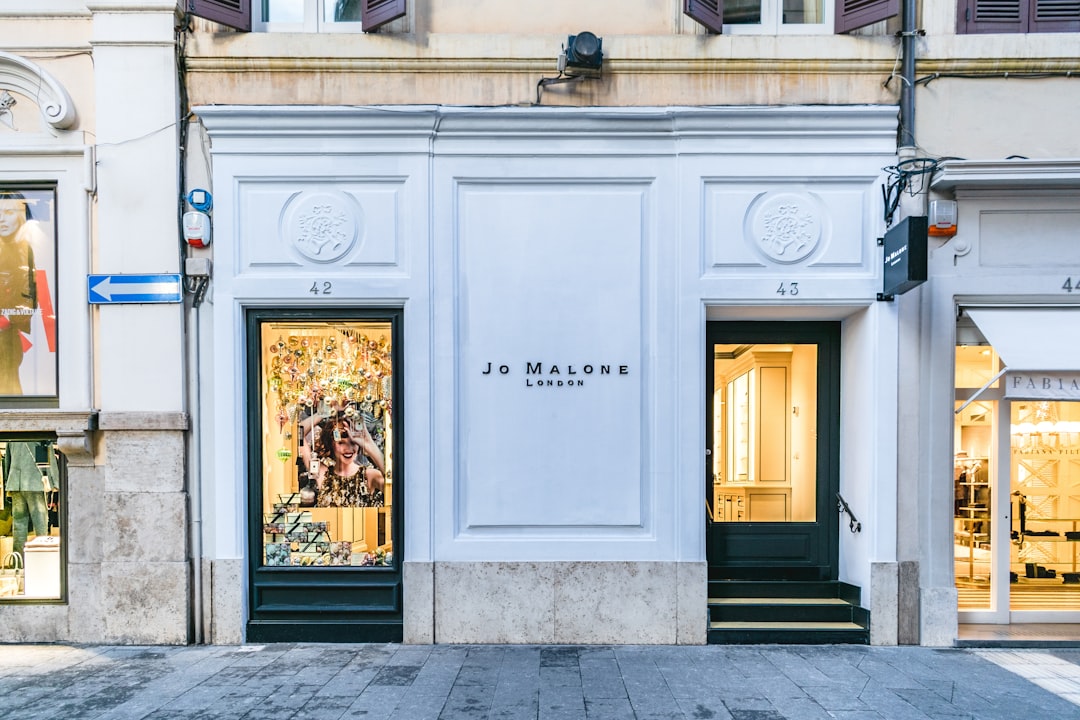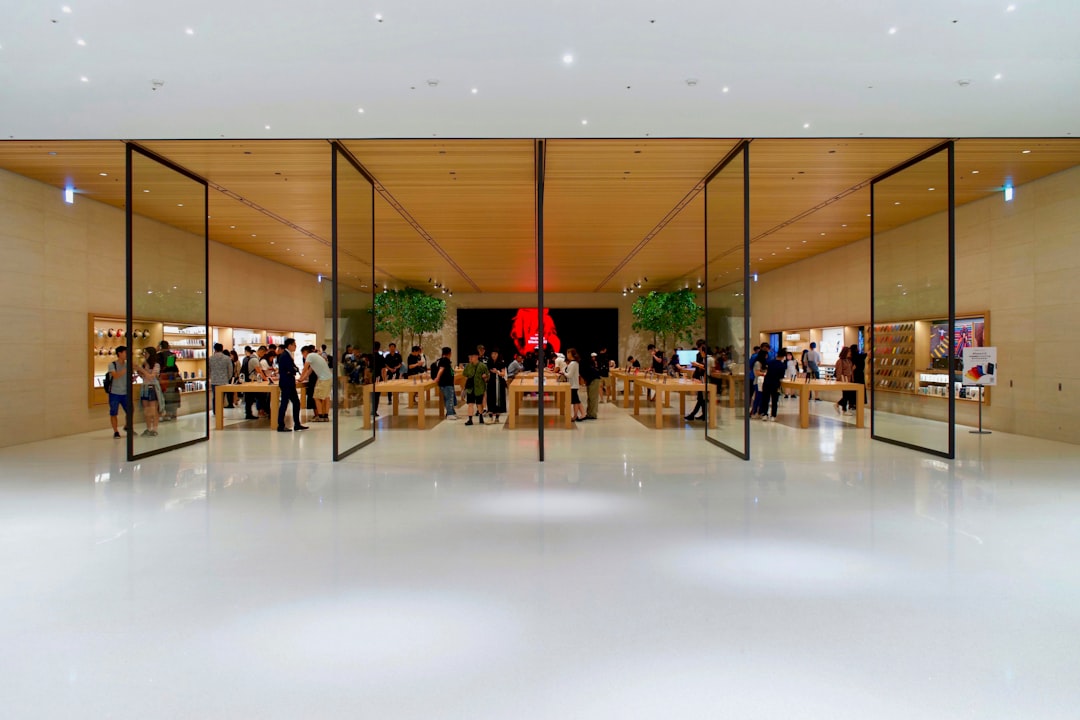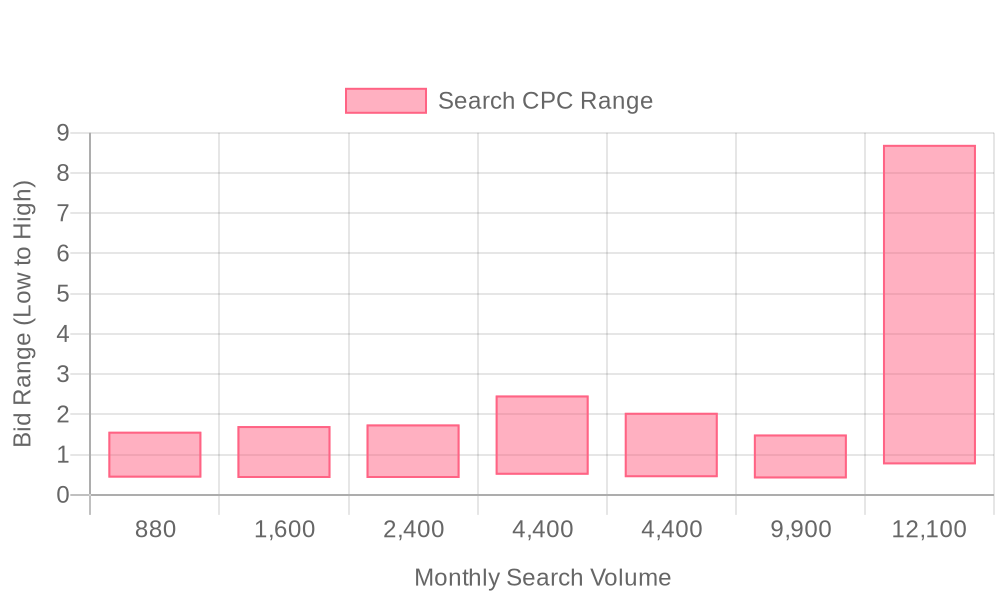
Supercharge your lead generation with a FREE Google Ads audit - no strings attached! See how you can generate more and higher quality leads
Get My Free Google Ads AuditFree consultation

No commitment
Supercharge your lead generation with a FREE LinkedIn Ads audit - no strings attached! See how you can generate more and higher quality leads
Get My Free Google Ads AuditFree consultation

No commitment
Supercharge your lead generation with a FREE Meta Ads audit - no strings attached! See how you can generate more and higher quality leads
Get My Free Google Ads AuditGet My Free LinkedIn Ads AuditGet My Free Meta Ads AuditFree consultation

No commitment
Supercharge your lead generation with a FREE Google Ads audit - no strings attached! See how you can generate more and higher quality leads
Get My Free Google Ads AuditFree consultation

No commitment
In the challenging landscape of digital advertising, businesses often miss high-value prospects simply due to gaps in data tracking. These missed opportunities can lead to significant revenue loss, especially when prospects research services without ever interacting with a CRM. Integrating Google Ads into your strategy allows identification of anonymous but high-intent visitors, ensuring that your ad spend is effectively targeting decision-makers that matter. With the power to bridge online queries to offline purchases, Google Ads empowers businesses focusing on storefronts to enhance visibility and drive local foot traffic—ultimately boosting sales.

Storefronts gain significant competitive advantage by leveraging precision targeting to attract local prospects at the exact moments they are evaluating purchase options. Sophisticated advertisers use location-based audience segmentation to reach high-intent customers within defined proximity, ensuring marketing spend is focused on users most likely to convert in person. This approach avoids the lag and inefficiency that occur when CRM systems fail to sync recent activity, which can suppress timely outreach and diminish campaign ROI. For a comprehensive overview of how retailers can harness Google Ads to increase both in-store and online sales, explore this guide to Google Ads for retail.
Marketers increase lead quality by tailoring ad creatives to reflect store-specific promotions, seasonal events, and urgency-based messaging. Dynamic creative optimization lets retailers highlight limited-time offers or exclusive in-store experiences, prompting immediate action before prospects lose interest or turn to competitors. Integrating Sona identification allows marketing teams to move beyond anonymous web traffic, recognizing both individuals and companies who visit physical locations.
Local inventory ads serve as a powerful bridge between online discovery and offline purchase by displaying live, store-level product availability to nearby shoppers. These ads reduce wasted clicks by ensuring users see only items currently in stock at their nearest location, minimizing customer frustration and driving higher conversion rates. Through Sona audiences, audience lists are continuously refreshed as leads move through the funnel.
Mobile landing pages are essential for capturing leads from users searching on the go, delivering a seamless experience tailored for quick decision-making. Responsive design, click-to-call options, and integrated map directions make it easy for potential customers to find, contact, and visit the store. By syncing enriched audience segments and lead data into Google Ads, as well as major CRMs like HubSpot and Salesforce, Sona destinations ensures that marketing and sales teams operate from the same real-time dataset, streamlining follow-up and accelerating deal velocity.
Integrating Google Merchant Center with your advertising workflow elevates store event and in-store offer promotions. Automated product feeds keep inventory, pricing, and promotional data current across all Google surfaces, so customers always see the most relevant offerings. Marketers can use advanced conversion tracking and store visit attribution to measure the true impact of campaigns across online and offline channels, connecting ad spend directly to in-store revenue. This unified feedback loop enables continuous optimization and a clearer view of full-funnel marketing effectiveness. Ready to unify your storefront lead generation strategy? Get started for free with Sona.

Modern storefronts operate in an environment where every local search, mobile map query, and product lookup can influence real-world foot traffic and sales. Google Ads puts these businesses directly in front of nearby shoppers ready to take action, enabling precise, high-impact engagement at the moment it matters most. For additional strategies to optimize your digital presence, explore our marketing and analytics insights.


Expanding your reach in Google Ads for Store Fronts requires moving beyond the standard playbook and tapping into less saturated growth channels. Modern revenue teams are seeing measurable results by leveraging granular targeting, competitive intelligence, and advanced audience strategies to engage high-intent buyers and drive in-store conversions. Explore Google’s retail solutions hub for additional tools and insights designed to help retailers grow both online and offline sales.
Unlocking growth in Google Ads for Store Fronts means combining creative targeting with unified data across every channel. By integrating real-time intent and advanced attribution, you can identify, engage, and convert high-value customers at every stage of their journey—ultimately turning online discovery into measurable in-store results. To see how unified data strategies can accelerate your storefront’s growth, get started for free with Sona.
Audience segmentation is the foundation for high-performing Google Ads campaigns targeting physical storefronts. By organizing prospects into well-defined groups, retailers can ensure each ad impression is relevant and aligned with the unique needs of every customer segment. This approach enables localized messaging, sharper budget allocation, and measurable increases in both foot traffic and store visit conversions.
Ready to improve your audience segmentation and drive more store visits? Get started for free with Sona.

| Industry | Keyword | Monthly Search Volume | Competition Level | Low Bid | High Bid |
| Store Fronts | store front for lease | 880 | MEDIUM | 0.43 | 1.57 |
| Store Fronts | store front for rent | 1600 | MEDIUM | 0.42 | 1.71 |
| Store Fronts | storefront for rent | 2400 | MEDIUM | 0.42 | 1.75 |
| Store Fronts | store fronts | 4400 | LOW | 0.5 | 2.47 |
| Store Fronts | storefront for rent near me | 4400 | MEDIUM | 0.44 | 2.04 |
| Store Fronts | shops for rent near me | 9900 | MEDIUM | 0.41 | 1.5 |
| Store Fronts | storefront | 12100 | LOW | 0.76 | 8.7 |
Effective keyword strategy is the foundation for maximizing the impact of Google Ads for Store Fronts. Retailers must align their paid search approach with the intent and urgency that defines local shopping behavior. High-performing campaigns target consumers ready to convert, using queries such as “store near me,” “buy [product] locally,” or “in-stock at [store name].” For a comprehensive overview of how retailers can leverage these tactics, see this guide to Google Ads for retail, which outlines methods to increase both in-store and online sales.
To ensure reach meets intent, prioritize high-intent search terms that reflect a user’s readiness to buy. Predictive insights from accurate revenue attribution reveal which local keywords drive not just clicks, but actual visits and sales. By filtering out ambiguous, low-quality queries and applying negative keywords, campaigns avoid wasted spend on generic traffic. This refines the audience pool, so budget is allocated toward users most likely to visit and purchase.
Location-based modifiers further amplify relevance. Phrases like “open now near [city],” “same-day pickup,” or “best deals in [neighborhood]” help storefronts surface when shoppers are searching nearby. When marketers unify search data with real-time audience signals, they can shift spend dynamically to the highest-converting regions and times. This data-driven approach ensures visibility where and when it matters, resulting in improved store visit rates and more efficient use of advertising budgets.
Audience building becomes more powerful when visitor identification goes beyond anonymous clicks. Marketers can leverage store visit tracking and CRM integrations to create dynamic audiences—segments that update automatically as leads progress through the funnel or as location intent shifts. By connecting Google Merchant Center, Shopping Ads, and local business marketing data, teams gain granular control over who sees their ads and when, driving measurable increases in in-store conversions.
Want to apply these strategies to your storefront campaigns? Get started for free with Sona.
A precision-driven campaign framework for Google Ads for Store Fronts maximizes local ROI by connecting granular targeting with data-rich optimization. Successful campaigns are built on current market insights, rapid feedback cycles, and a seamless bridge between online engagement and offline outcomes. For an in-depth look at strategies retailers use to increase both in-store and online sales, explore this overview of Google Ads for retail. To further develop your local marketing approach, visit our blog for actionable insights.
Effective keyword lists for store front advertising require more than broad, generic phrases. Incorporate city-specific modifiers and long-tail queries that reflect real purchase intent, such as "shoe store downtown Austin" or "organic groceries near 5th Avenue." This approach ensures ads show to customers most likely to visit, translating digital spend into real-world foot traffic. Geo-targeting settings should be used to exclude non-relevant regions and maximize efficiency, enabling budget allocation to the highest-converting local segments. When leveraging precise audience intelligence, teams can pinpoint not just the location but the intent and identity behind each search, making every impression count.
Integrating real-time visitor identification and in-market behavior analysis allows marketers to refine these keyword lists continuously. As user patterns shift and high-value leads emerge, budget and targeting can be dynamically adjusted to focus on those most likely to convert, ensuring that every dollar is directed toward prospects with genuine offline purchase potential.
Ad copy should not only highlight unique selling propositions but also directly address the preferences of the local audience. Messaging that calls out exclusive in-store experiences, staff expertise, or neighborhood perks resonates with shoppers searching for nearby options. Promotions such as "20% Off First Purchase" or "Free Gift with Visit" add an immediate incentive, driving higher click-through rates among high-intent audiences.
With access to unified audience insights, marketers can adjust messaging in real time, reflecting seasonal trends or shifting local demand. By aligning creative assets with current consumer behavior and updating offers dynamically, campaigns remain relevant and compelling, supporting both customer acquisition and retention at the storefront level.
Landing pages should closely match ad messaging and offer a seamless, mobile-optimized experience for users seeking immediate solutions. Include localization elements such as embedded maps, up-to-date store hours, and directions to reinforce the physical presence and make in-person visits frictionless. For more guidance on optimizing for local intent, review this guide to Google Ads local campaigns. Personalized content based on visitor intent signals—such as showing different product highlights for returning vs. new customers—further increases conversion rates.
With dynamic audience tracking and real-time data sync, landing pages can adapt to the stage of each lead. As prospects move from discovery to intent, content and calls to action update automatically, ensuring a cohesive journey from ad click to store visit. Integrating CRM and ad platform data allows for personalized follow-up, nurturing high-value leads with targeted offers or reminders that are contextually relevant.
Performance measurement must capture both click-through metrics and offline conversions, substantiating the true value of each campaign. By tracking store visit conversions alongside online actions, marketers can accurately assess which ads drive foot traffic and revenue at the storefront. Automated bidding strategies, informed by unified performance data, enable rapid adaptation to market shifts, ensuring spend is continually optimized for the highest ROI.
Offline and online attribution models, enhanced by advanced ad conversion tracking, empower teams to see a complete view of customer journeys. CRM and ad platform integrations automate the sync of enriched audience data, allowing for real-time audience updates and more precise retargeting. This unified approach ensures optimization decisions are rooted in actual business outcomes, not just digital proxies, delivering consistent gains in both digital and in-store performance. To experience this streamlined approach, get started for free with Sona.

Expanding your storefront’s market presence requires more than generic outreach—it demands coordinated, data-driven strategies that span multiple consumer touchpoints. Successful brands rely on unified customer insights to inform every campaign, ensuring each interaction is relevant and timely. Solutions like Sona Identification can reveal which companies and people are visiting your website, enabling you to turn anonymous traffic into qualified pipeline while refining your outreach for maximum impact.
Integrating these tactics within your Google Ads for Store Fronts strategy ensures that each campaign is more than a standalone effort—it becomes part of a living, adaptive system that responds to actual customer behavior. By unifying CRM and ad data, leveraging real-time intent signals, and activating authentic community partnerships, B2B revenue teams can confidently demonstrate measurable results. Ready to streamline your storefront campaigns? Get started for free with Sona.
Harnessing the power of Google Ads for your storefront can transform your business by driving foot traffic, enhancing customer engagement, and boosting sales. As the digital landscape continues to evolve, leveraging these tools effectively is crucial for staying competitive in the retail sector.
Throughout this discussion, we've explored the challenges and opportunities of using Google Ads to promote physical retail locations. From targeting the right audience to crafting compelling ad content, understanding these elements can significantly enhance your advertising strategy. We've provided insights into optimizing your ad spend and measuring success, equipping you with the knowledge to make informed decisions.
Imagine the possibilities when your storefront becomes a bustling hub of activity, thanks to a well-executed digital advertising strategy. By implementing these strategies, you open the door to increased visibility and customer engagement, ultimately leading to greater success for your business.
To take the next step in revolutionizing your marketing efforts, start for free to experience our platform and its capabilities today.
To set up Google Ads for your storefront, leverage precision targeting to attract local prospects using location-based audience segmentation, tailor ad creatives to reflect store-specific promotions, and use tools like Google Merchant Center to keep inventory and promotional data current.
Google Ads allows local businesses to increase visibility, drive foot traffic, and connect online queries to offline purchases, ensuring effective targeting of high-intent customers and enhancing sales through precise geo-targeting and real-time audience updates.
Store visits can be tracked using Google Ads' conversion tracking, which ties in-store actions like direction clicks and call button presses back to digital engagement, providing a full picture of campaign effectiveness.
The budget for Google Ads should focus on high-intent local search terms and precise targeting to maximize ROI, and should be dynamically adjusted based on real-time performance data and shifting demand.
Effective ad types for storefronts include local search campaigns, display network ads, video promotions, and remarketing campaigns, all of which target high-intent audiences and drive in-store conversions.
Join results-focused teams combining Sona Platform automation with advanced Google Ads strategies to scale lead generation

Connect your existing CRM

Free Account Enrichment

No setup fees
No commitment required

Free consultation

Get a custom Google Ads roadmap for your business
Join results-focused teams combining Sona Platform automation with advanced Meta Ads strategies to scale lead generation

Connect your existing CRM

Free Account Enrichment

No setup fees
No commitment required

Free consultation

Get a custom Google Ads roadmap for your business
Join results-focused teams combining Sona Platform automation with advanced LinkedIn Ads strategies to scale lead generation

Connect your existing CRM

Free Account Enrichment

No setup fees
No commitment required

Free consultation

Get a custom Google Ads roadmap for your business
Join results-focused teams using Sona Platform automation to activate unified sales and marketing data, maximize ROI on marketing investments, and drive measurable growth

Connect your existing CRM

Free Account Enrichment

No setup fees
No commitment required

Free consultation

Get a custom Google Ads roadmap for your business
Over 500+ auto detailing businesses trust our platform to grow their revenue
Join results-focused teams using Sona Platform automation to activate unified sales and marketing data, maximize ROI on marketing investments, and drive measurable growth

Connect your existing CRM

Free Account Enrichment

No setup fees
No commitment required

Free consultation

Get a custom Google Ads roadmap for your business
Over 500+ auto detailing businesses trust our platform to grow their revenue
Join results-focused teams using Sona Platform automation to activate unified sales and marketing data, maximize ROI on marketing investments, and drive measurable growth

Connect your existing CRM

Free Account Enrichment

No setup fees
No commitment required

Free consultation

Get a custom Google Ads roadmap for your business
Over 500+ auto detailing businesses trust our platform to grow their revenue
Our team of experts can implement your Google Ads campaigns, then show you how Sona helps you manage exceptional campaign performance and sales.
Schedule your FREE 15-minute strategy sessionOur team of experts can implement your Meta Ads campaigns, then show you how Sona helps you manage exceptional campaign performance and sales.
Schedule your FREE 15-minute strategy sessionOur team of experts can implement your LinkedIn Ads campaigns, then show you how Sona helps you manage exceptional campaign performance and sales.
Schedule your FREE 15-minute strategy sessionOur team of experts can help improve your demand generation strategy, and can show you how advanced attribution and data activation can help you realize more opportunities and improve sales performance.
Schedule your FREE 30-minute strategy sessionOur team of experts can help improve your demand generation strategy, and can show you how advanced attribution and data activation can help you realize more opportunities and improve sales performance.
Schedule your FREE 30-minute strategy sessionOur team of experts can help improve your demand generation strategy, and can show you how advanced attribution and data activation can help you realize more opportunities and improve sales performance.
Schedule your FREE 30-minute strategy sessionOur team of experts can help improve your demand generation strategy, and can show you how advanced attribution and data activation can help you realize more opportunities and improve sales performance.
Schedule your FREE 30-minute strategy session





Launch campaigns that generate qualified leads in 30 days or less.
